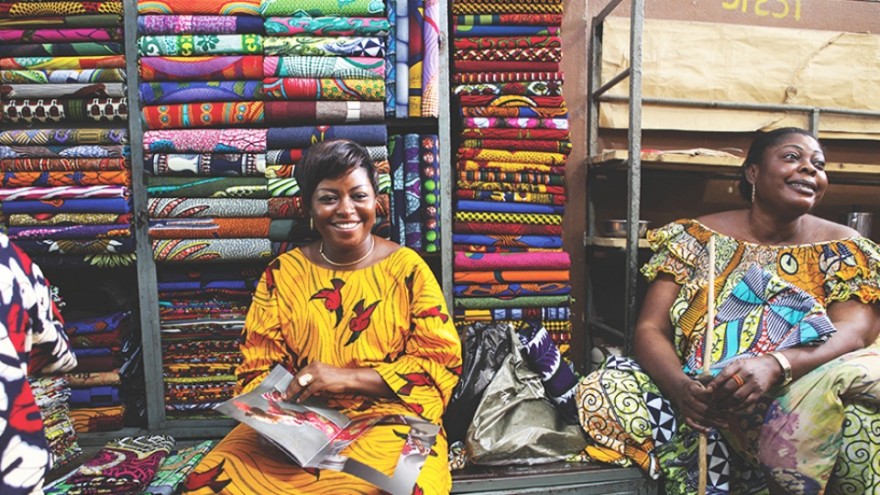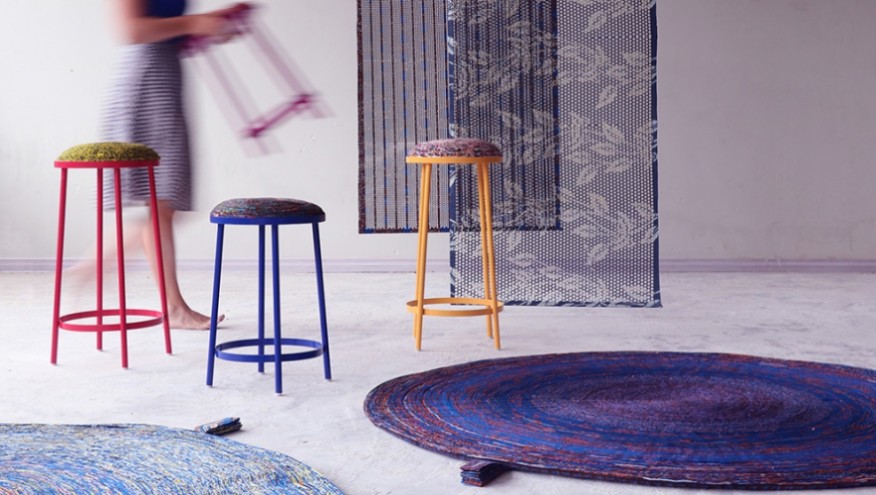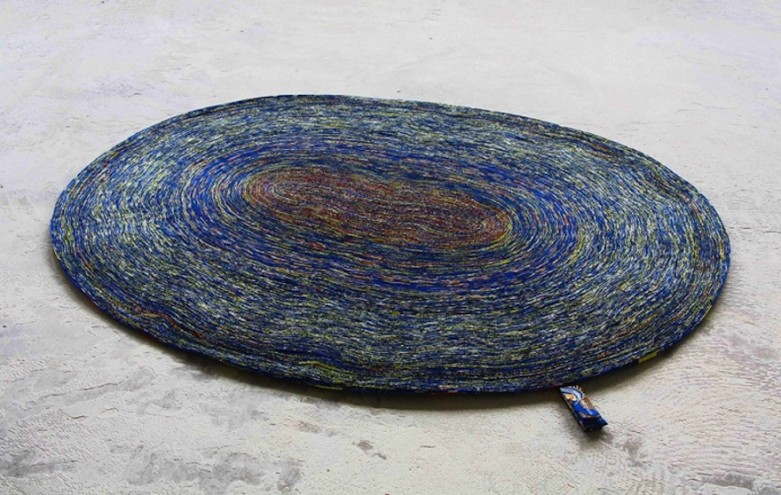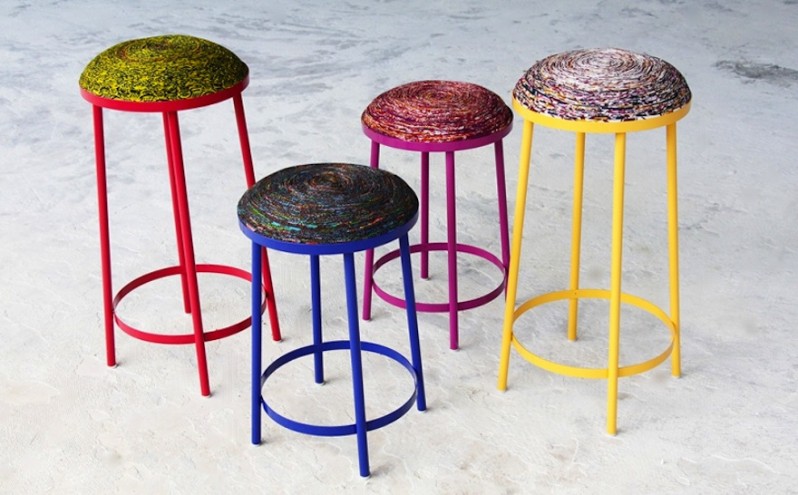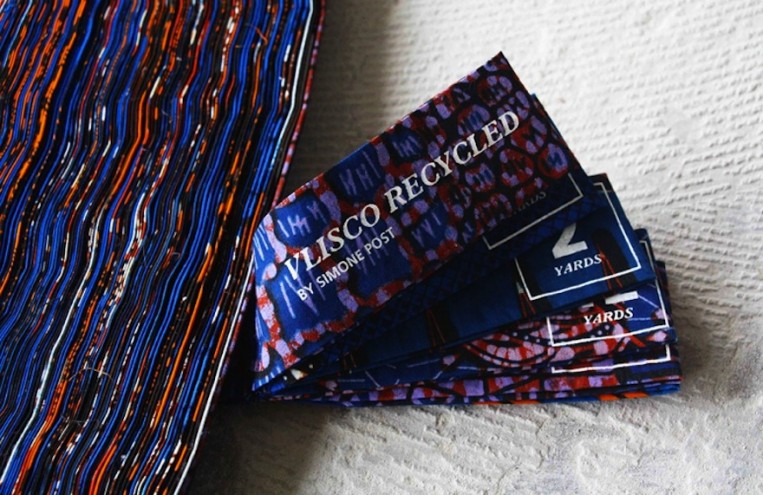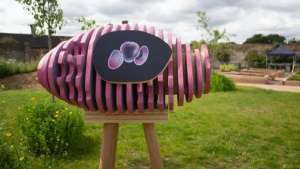Since 1846 Vlisco has created the iconic graphic wax-prints popular in the Central and West African market. The key to Vlisco’s century-long success has been a thorough and complex production technique. The technique consists of many different steps: printing the wax, dyeing in dye baths, breaking the wax, printing with felt rollers, silkscreen printing, and possible after-treatments.
Vlisco maintains exceptionally high standards and as a result many reams of fabric don’t make the final cut. But Vlisco has yet to find a destination for the rejected fabric. Noticing a gap in the market, Design Academy Eindhoven graduate Simone Post designed Vlisco Recycled. Post uses discarded wax-prints to create patterned cloth panels to divide and accentuate spaces, circular rugs, and seat covers.
Vlisco’s textile prints are true art works. So, whatever was to be the solution to the ‘waste’ could not focus on these prints.” – Post.
Post winds the misprints into circular rugs or shapes them into seat covers. With folding and laser cutting, she creates patterned cloth panels to divide and accentuate spaces. There are endless colour combinations and every product is unique.
The end product maintains the deep and bold colours of Vlisco’s cloth but it doesn’t compete with the Vlisco textile or fashion market. “Those interested in the printed fabrics, have the possibility of buying the original cloth,” says Post.
Vlisco Recycled has been nominated for the Keep An Eye Grant, which is awarded to a student to develop their talent in the creative field with a vision for their talent and future career.

